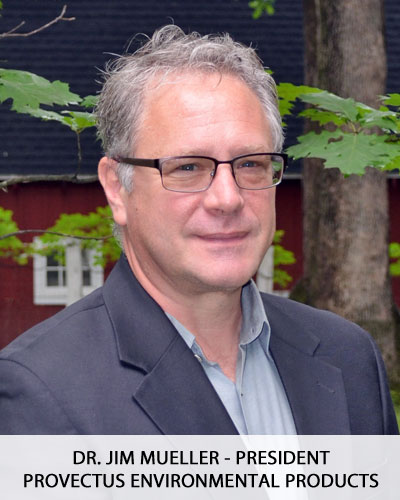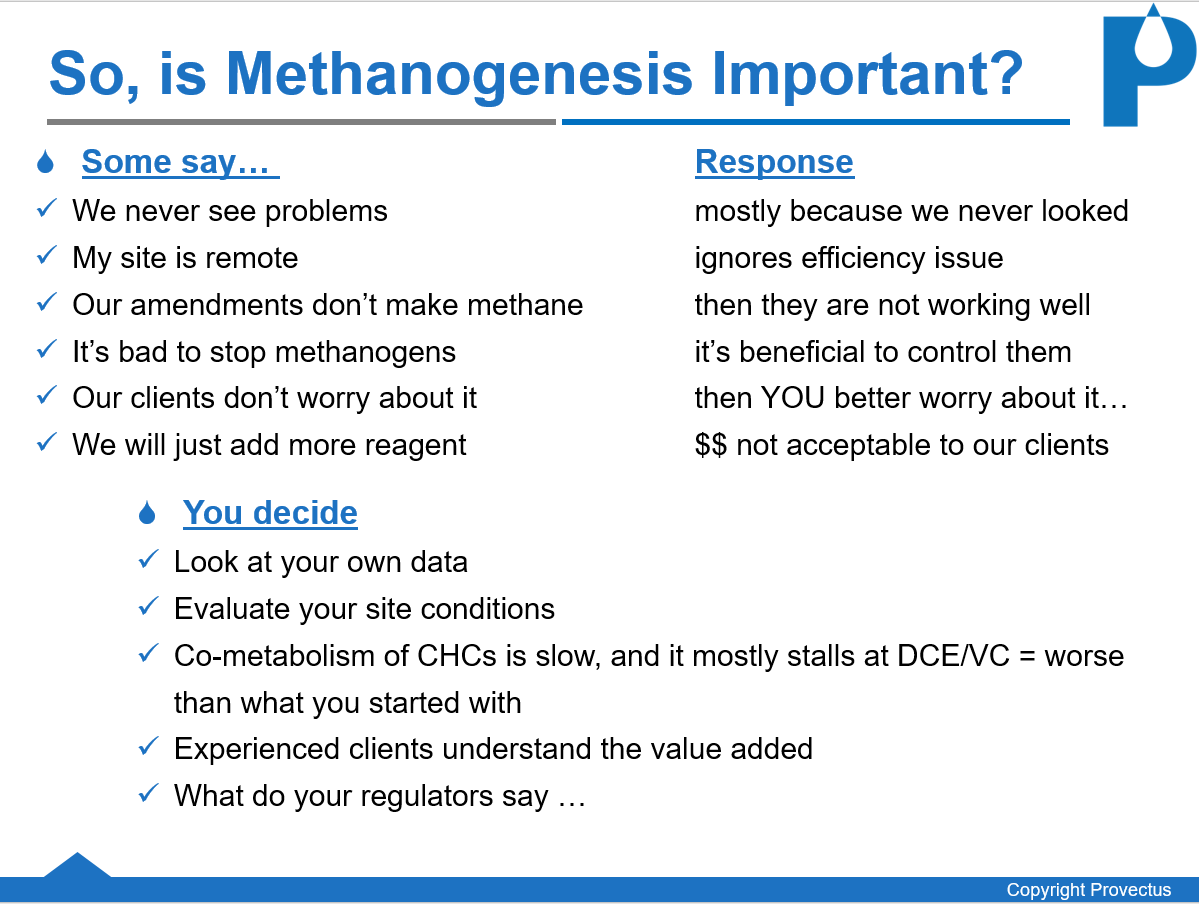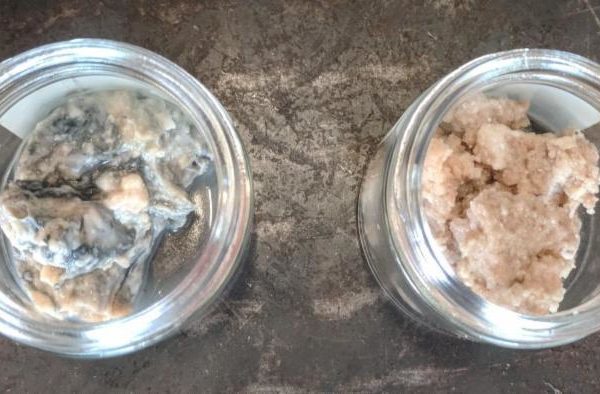Letter From The President – An Appreciation for Professional Skepticism
Circa July 2014, Provectus introduced to our industry the concept of controlling methanogenesis during in situ remedial actions that employed conventional ERD or ISCR technologies. Since that time, we have effectively integrated our Provect-CH4® antimethanogenic reagents (AMR) into ERD-CH4®, Provect-IR®, Provect-IRM®, EZVI-CH4™, and AquaGate®-CH4™ (multiple patents issued/pending) yielding improved ( i.e., safer, more efficient, more effective, and less expensive) remedial amendments. And we have successfully applied millions of pounds of these improved products at multiple sites throughout the USA, Europe and Ocean Asia. Based on previous experience, we knew well that the introduction of an entirely new concept and associated technologies would generate discussion and debate. While critical, most of these interactions were professional, mutually respectful, and productive. Moreover, we knew that as recognized technologists and seasoned practitioners the industry would rightfully expect from us more rigorous documentation of efficacy and proof of performance than it would expect from others who might introduce a new flavor of a cloned technology. As anticipated, there were three main perspectives on the potential safety and efficacy issues of excessive methane production and its control (see table below) i.e., those who: i) accepted/acknowledged the issues, Initially, the “Professional Skeptic” category represented the majority of our colleagues. They generally accepted and acknowledged the importance of excessive methanogenesis but maintained a reserved position until further evidence convinced them that AMR chemistries and our associated remedial products are valid and effective. In these Newsletters, we try to provide information to help in that transition. To our readers who became valued clients and gave us the opportunity to demonstrate our technologies, we thank you for your leadership, forethought and confidence in us. These are the efforts that yield critical laboratory and field data that we can share with others to complete the modernization of conventional ERD and ISCR technologies.
|
Where Is All This Methane Coming From?Stable-carbon (δ13C) and naturally occurring radiocarbon (14C) analyses can conclusively identify methane sources in soil gasses, groundwater, vadose soils and ambient/indoor air.Methane in ecosystems can originate thermogenically from regions of petroleum formation deep within the earth and/or via microbial fermentation of organic carbon and microbial reduction of carbon dioxide. Because methanogens/Archaea are often the dominant microbes in reduced environments, in situ remedial actions employing conventional ( i.e., no active control of Archaea) ERD amendments such as [emulsified] oils/lecithins, lactates/sugars, simple hydrogen release compounds or conventional ISCR reagents such as EHC ®, Ferox-Plus ®, other redox substrates (EHS) et cetera can generate excessive amounts of methane. Where is this excessive methane coming from? |
Provectus Expands Ocean Asia OperationsProvectus Asia – We are very pleased to announce the establishment of TED Technology Co. Ltd. Through this new business entity, we manufacture Provectus products for timely delivery and cost-effective use throughout Ocean Asia. Please contact Mr. T.K. Huang at [email protected] or (+886) 2 8655-8001 with any questions or requests for assistance. Taiwan Environment Scientific Co. Ltd. (TESC) – We are excited to announce an exclusive teaming agreement with TESC (www.TESC.com.tw) to utilize Provectus products in Taiwan. “TESC recognized the superior performance chemistries and industry leadership from Provectus, and we made the obvious decision to offer these proven technologies to our clients”, stated Mr. Daniel Chang, CEO of TESC. From our perspective here at Provectus, we know well that the remediation experts at TESC will properly utilize our technologies where they represent the safest, most effective, and most cost-efficient solutions. Please contact Ms. Tracey Hsu at [email protected] or +(866)-7-6231588 ext.1205 with any questions or requests for assistance.
Provectus Australia – Peter Storch
You can contact Peter via email at [email protected] or (+61) 427 782 681. |
– WHAT’S IN THE BAG? –Provect-IR ® Antimethanogenic ISCR Reagent What’s in the Bag? Comparative Analysis of Provect-IR® Antimethanogenic ISCR Reagent and Other Conventional ISCR Materials (that do not control excessive methanogenesis)
Footnotes: Our standard “Provect-IR15” product line material has 15% (weight basis) ZVI which is of premium grade, optimal particle size to balance reactivity and longevity, and very high in terms of purity and reactive surface area. Of course, customized formulations of Provectus products are always available based on site-specific needs. Comparing Provect-IR to seemingly similar ISCR reagents, it has:
Staff now at Provectus developed some of the original, conventional/older non-antimethanogenic ISCR reagents over 10 years ago so we know best that Provect-IR is simply a safer, better product. And it is very cost competitive! In the immortal words of the former owner of Remington (Norelco) Razors – Mr. Victor Kermit Kiam II (1926-2001): Use A Better ISCR Reagent – contact us (download our FREE site evaluation form) for a complementary conceptual design and material cost estimate. |
Methane Zone – New Remediation Guidance Document
|
Provectus Welcomes Matt Geary – Director Business Development
If you are in the northeast USA, you will soon hear from Matt to schedule a practical, useful and informative technology transfer session. Matt offers an excellent presentation that is not the standard “buy our wares” sales pitch. He will respond to your request for assistant in an enthusiastic, friendly and timely manner. . You can contact Matt via email at [email protected] or (610) 368-1729. |




 We are very pleased to announce a strategic alliance with Mr. Peter Storch, P.E. and his new company Professional Remediation Engineering headquartered in VIC, Australia. Peter will provide our clients in Australia and Ocean Asia with technical support of the highest caliber coupled with a clear focus on client service. Please look forward to hearing from Peter and learning more about our portfolio of remedial technologies.
We are very pleased to announce a strategic alliance with Mr. Peter Storch, P.E. and his new company Professional Remediation Engineering headquartered in VIC, Australia. Peter will provide our clients in Australia and Ocean Asia with technical support of the highest caliber coupled with a clear focus on client service. Please look forward to hearing from Peter and learning more about our portfolio of remedial technologies.
 On May 2, 2016 Provectus Environmental Products, Inc. proudly announced that Mr. Matt Geary joined the firm as Director – Business Development. Matt is located in our newly established Philadelphia, Pennsylvania office. Matt will focus his efforts to support clients with their environmental management needs. Matt has a strong and diverse background in applied environmental sciences, and has been a leader in the remediation market for over 25 years. Matt formally served as a Vice President for a mid-sized remediation consulting firm with offices in the mid-Atlantic, and he most recently was responsible for technical sales and support for CETCO Environmental Products Group covering the mid-Atlantic and Eastern Canada.
On May 2, 2016 Provectus Environmental Products, Inc. proudly announced that Mr. Matt Geary joined the firm as Director – Business Development. Matt is located in our newly established Philadelphia, Pennsylvania office. Matt will focus his efforts to support clients with their environmental management needs. Matt has a strong and diverse background in applied environmental sciences, and has been a leader in the remediation market for over 25 years. Matt formally served as a Vice President for a mid-sized remediation consulting firm with offices in the mid-Atlantic, and he most recently was responsible for technical sales and support for CETCO Environmental Products Group covering the mid-Atlantic and Eastern Canada.